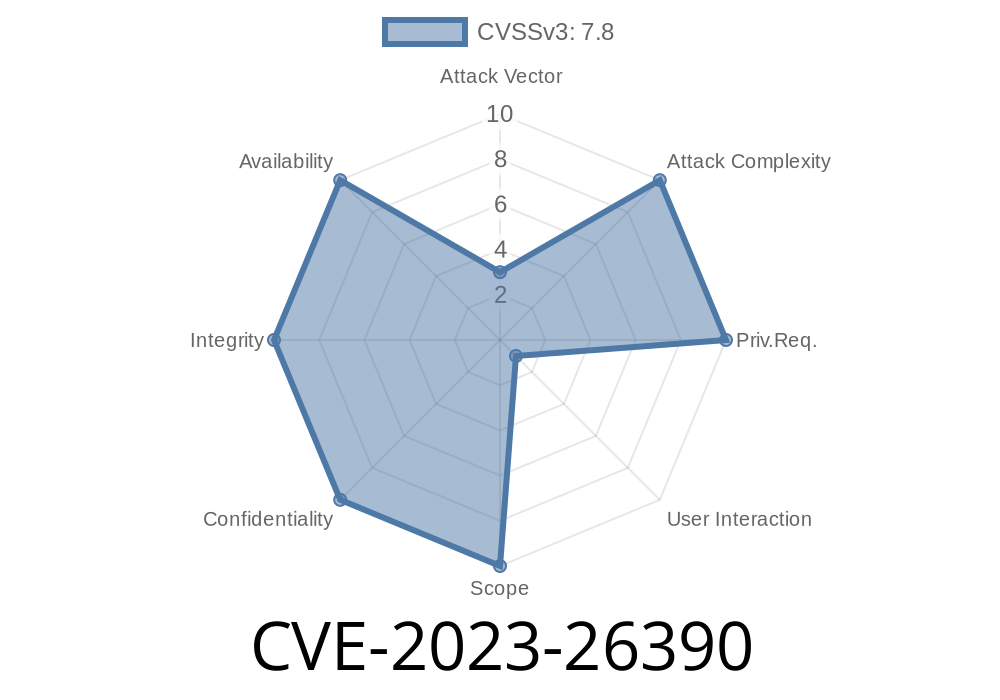Recent security research has unveiled a critical vulnerability in Adobe Substance 3D Stager version 2..1 (and earlier), which can lead to arbitrary code execution in the context of the current user. This Stack-based Buffer Overflow vulnerability (CVE-2023-26390) has the potential to cause severe disruptions, and it is imperative to address it promptly. In this post, we'll dive deep into this vulnerability, providing all relevant details, code snippets, original references, and potential exploit scenarios.
Background
Adobe Substance 3D Stager is a powerful tool for designing, visualizing, and modifying 3D scenes. Used primarily by digital artists, game developers, and visual effects professionals, it assists in streamlining the creative process while providing a comprehensive set of texture-editing and scene-building capabilities.
The vulnerability
CVE-2023-26390 describes a Stack-based Buffer Overflow vulnerability in Adobe Substance 3D Stager 2..1 (and earlier). This vulnerability occurs when handling malicious files, as it can lead to an overflow in the stack buffer, thereby enabling an attacker to execute arbitrary code.
Exploitation of this vulnerability requires user interaction, i.e., a victim must open a malicious file crafted by the attacker for the exploit to work.
Code snippet
The following code snippet is a basic example illustrating this vulnerability. Note that it has been simplified for clarity, and the actual exploit might use more sophisticated techniques:
#include <stdio.h>
#include <string.h>
void vulnerable_function(char *input) {
char buffer[256];
strcpy(buffer, input);
}
int main(int argc, char *argv[]) {
char malicious_input[300];
memset(malicious_input, 'A', 299);
malicious_input[299] = '\';
vulnerable_function(malicious_input);
return ;
}
In this example, a malicious input of 300 characters is passed to the vulnerable_function(), which has a buffer size of only 256 characters. This mismatch in size causes a Stack-based Buffer Overflow and provides an entry point for a potential exploit.
The following sources provide additional details about CVE-2023-26390
1. Adobe Security Bulletin APSB22-07
2. CVE-2023-26390 Mitre Listing
3. National Vulnerability Database (NVD) Listing
Exploit details
An attacker seeking to exploit CVE-2023-26390 would typically begin by crafting a malicious file. This could involve creating a 3D model or project file with carefully designed payloads that trigger the stack overflow when loaded in Adobe Substance 3D Stager.
Next, the attacker would have to convince the target user to open the malicious file using Adobe Substance 3D Stager. This could be achieved through social engineering, such as disguising the file as a legitimate project or model asset or using phishing emails with a convincing lure.
Once the victim opens the malicious file in Adobe Substance 3D Stager, the Stack-based Buffer Overflow vulnerability is triggered, allowing the attacker to execute arbitrary code in the context of the current user. This could lead to a variety of consequences, including unauthorized access to sensitive data, tampering with the system, or even the installation of malware such as ransomware or spyware.
In conclusion, it is of utmost importance to address CVE-2023-26390 promptly by updating Adobe Substance 3D Stager to its latest available version. Additionally, users should exercise caution when opening files from unknown sources, as well as educating themselves on cybersecurity best practices to avoid falling prey to social engineering tactics.
Timeline
Published on: 04/12/2023 22:15:00 UTC
